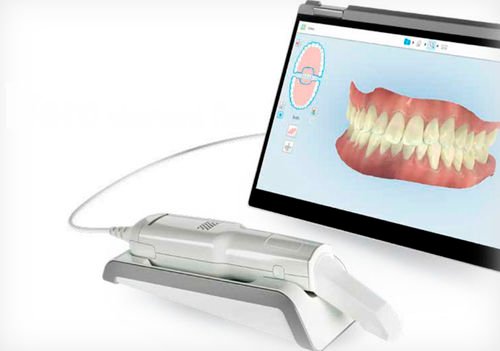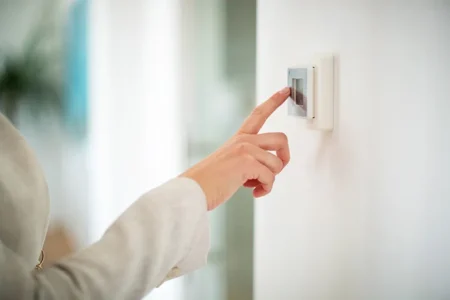The advent of 3D dental scanners has significantly transformed the landscape of modern dentistry. With the ability to capture precise, three-dimensional images of the teeth, gums, and surrounding oral structures, 3D dental scanners provide enhanced diagnostic capabilities and enable faster, more accurate treatment planning. This article explores the key benefits of 3D dental scanners and how they contribute to improved patient care and more efficient dental procedures.
What Are 3D Dental Scanners?
3D dental scanners are cutting-edge imaging devices that use advanced technology to create digital, three-dimensional models of a patient’s oral cavity. These scanners capture detailed images of the teeth, gums, and jaw, offering a comprehensive view of the patient’s oral health. Unlike traditional 2D X-rays, which provide only limited information, 3D scanners offer an all-encompassing perspective of a patient’s dental structures, enabling better decision-making and treatment planning.
By utilizing techniques like laser scanning or structured light, these devices can quickly capture high-resolution images that are processed into digital models. These models are then analyzed by dental professionals for accurate diagnosis, treatment planning, and communication with patients.
Key Benefits of 3D Dental Scanners
- Faster Diagnosis and Treatment Planning
One of the most significant advantages of 3D dental scanners is their ability to provide faster and more efficient diagnosis. Traditional methods, such as X-rays and physical impressions, often require multiple steps and visits to complete a treatment plan. With 3D imaging, the process is streamlined, allowing dental professionals to obtain detailed images quickly.
Once the 3D scan is completed, it can be immediately reviewed by the dentist or orthodontist. This accelerates the diagnostic process, reducing the time it takes to develop a comprehensive treatment plan. As a result, patients experience faster care and shorter wait times for procedures, making the dental experience more convenient and efficient.
- Higher Accuracy and Precision
3D dental scanners deliver unparalleled precision in capturing the intricate details of a patient’s oral anatomy. Unlike traditional X-rays that provide only a limited, flat view, 3D imaging gives a complete, accurate representation of the entire oral cavity, including hard-to-reach areas such as the roots of teeth and jawbone structures.
This accuracy is crucial for a variety of procedures, such as implant planning, root canal therapy, and orthodontics, where even the smallest details can affect the outcome. The precise imaging offered by 3D dental scanners ensures that dental professionals can make well-informed decisions and create treatment plans that are tailored to each patient’s unique needs.
- Non-invasive and Comfortable for Patients
Traditional diagnostic methods, such as dental impressions, often involve uncomfortable materials that patients must bite down on for extended periods. In contrast, 3D dental scanners provide a non-invasive alternative that eliminates the need for such uncomfortable procedures. Scanners capture images without making direct contact with the patient’s mouth, providing a much more comfortable experience.
Additionally, the scanning process is quick and efficient, usually taking just a few minutes to complete. This comfort improves the overall patient experience, helping to reduce anxiety and stress often associated with dental visits.
- Enhanced Communication with Patients
One of the key benefits of 3D dental scanners is their ability to facilitate better communication between dental professionals and patients. The detailed 3D models generated from scans can be displayed on a screen, allowing the dentist to visually explain the diagnosis and proposed treatment to the patient. By showing patients the specific areas of concern, dental professionals can help them better understand their oral health and the recommended treatments.
This visual approach increases patient trust and engagement, as they can clearly see the problem areas and the rationale behind the treatment plan. The ability to share 3D images fosters a more collaborative and transparent relationship between dentist and patient.
- Improved Accuracy in Restorations
For restorative procedures such as crowns, bridges, and dentures, the accuracy of 3D dental scanners is invaluable. Traditional impressions can sometimes result in distortion, leading to poorly fitting restorations that require adjustments or remakes. In contrast, digital 3D models are highly accurate and precise, ensuring that restorations fit perfectly from the start.
This precision minimizes the need for multiple appointments or adjustments, improving both the efficiency and effectiveness of restorative procedures. Additionally, 3D scans can be sent directly to dental laboratories, expediting the fabrication of restorations and reducing the overall treatment time.
- Simplified Orthodontic Planning
Orthodontic treatments, such as braces and clear aligners, benefit immensely from 3D dental scanning. 3D models allow orthodontists to visualize the alignment of teeth, jaw positioning, and bite patterns with incredible accuracy. With these digital models, orthodontists can plan treatments more effectively, designing personalized braces or aligners that are tailored to the patient’s dental structure.
Moreover, for treatments like Invisalign, the ability to create precise digital impressions leads to better-fitting aligners and more predictable results. 3D dental scanners have revolutionized the way orthodontists plan and track progress throughout the treatment process.
- Increased Treatment Success Rates
Because 3D dental scanners provide such precise and comprehensive images, the likelihood of successful outcomes for complex dental procedures is greatly increased. For example, in implantology, a 3D scan can help the dentist assess bone density, determine the optimal placement of the implant, and avoid sensitive structures such as nerves and blood vessels.
This level of detail and accuracy reduces the risk of complications during procedures, leading to higher success rates and fewer revisions. With more accurate planning, patients experience better results and less time spent in the dental chair.
Conclusion
3D dental scanners offer a host of benefits that significantly enhance the treatment planning and diagnostic capabilities of dental professionals. By providing faster, more accurate, and non-invasive imaging, these advanced tools help improve patient outcomes and overall treatment efficiency. From precise implant planning to improved communication with patients, 3D dental scanners are transforming the way dentistry is practiced, making dental care more effective, comfortable, and accessible for patients worldwide. As technology continues to advance, the role of 3D dental scanners in modern dental practices will only continue to grow, offering even greater potential for improved patient care and treatment success.







